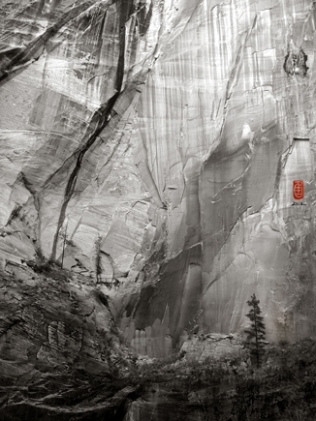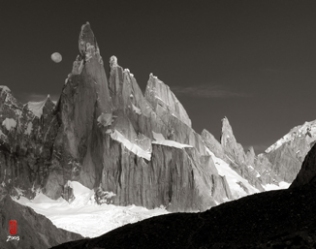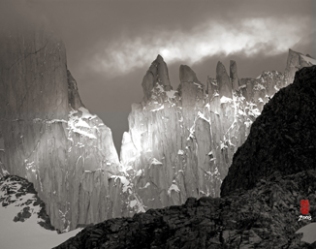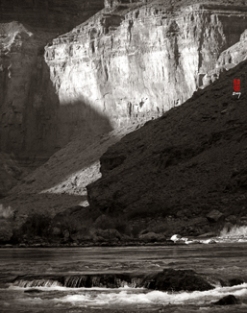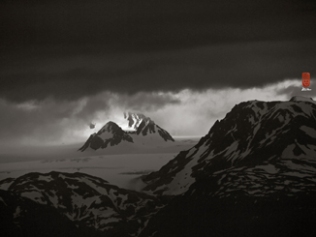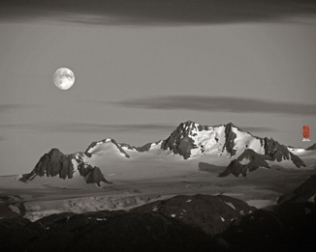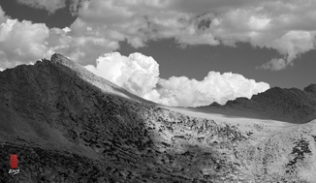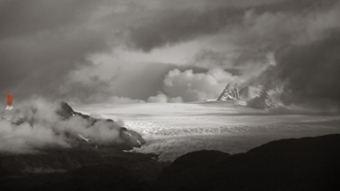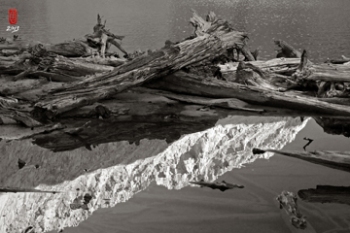For the last few years I’ve been very interested in natural beauty and how it affects us in psychological, emotional and spiritual ways, and I’ve been sharing my exploration through my photographs and coffee-table books.
Years ago, After earning my degree in geography, I set out to see the planet I’d been studying, with my camera, but I grew weary of the weight, and care for the equipment and film, so when a truck ran over my camera I quit photography. Whenever I had the urge to take a photograph, I’d stop and look and ask why. Studying the scene.
Fast-forwarding, decades later, while teaching aikido, I met a master of japanese aesthetics, and became his student. A few years later digital photography finally met the quality of film, and so I returned to photography. Next, I closed my school and returned to outdoor adventures.
I ended up hiking among these incredible granite spires in patagonia, and when I returned to show my teacher my photographs he told me to make a book. While I was hiking I’d been writing about the experience of having my mind blown by the mountains, so the result was the book titled THE GRANITE AVATARS OF PATAGONIA.
In the text of the book I asked why a human should have an experience of profound, mind-blowing awe while looking at a mountain. My conclusion was that the mountain must be in some profound relationship with humanity, and that the mountain must be divine, that is, an aspect of the source of all physical reality.
By extension this led to the realization that all of reality is the manifestation of the Source….that this is all one field of consciousness. If the division of consciousness was in order for it to experience itself, then the experience of beauty gets even more interesting.
A few years later I was invited to give a TED presentation. In preparation, I realized that natural beauty can be divided into yin and yang, that is, comforting beauty and shocking beauty, And that my interest was in shocking beauty. I’m interested in the experience of aesthetic arrest.
I was fresh from hypnotherapy school, and fascinated with the study of consciousness. researching, I found Thomas Campbell’s theory of evolution away from entropy. Tom explained to me that my photographs of mountains and canyons moved people not only because of my sense of composition, but because the subjects were resisting entropy, refusing to crumble due to the forces of erosion.
Next I made the book called Moved by a Mountain, a study of the view from my Alaska cabin. In it I asked why we call an alpine view “inspiring.” Inspiration usually comes from the acts or creations of others. The mountains just sit there. Again I asked if there is some kind of communication from the mountains to our souls.
I realized that over the 30 years that I had enjoyed my view, the mountain I call “the throneroom” had been inspiring me to seek dignity through its example of integrity…through it’s resistance to the forces trying to break it down.
Today, having just returned from backpacking in the sierras, I realize that Yosemite park was created around granite with integrity, while more fractured granite peaks remain unfamous, hidden in secret nooks of the national forests.
It seems the psyche of we humans responds to lithic integrity.
If crystals vibrate and radiate some form of energy which is more intense with the size of the crystal, then what might be emanating from such massive unified granite structures as half dome? Cerro Torre, or Monte Fitz Roy? …How might we experience that energy?
These days I’m interested in the aesthetic arrest and awe that comes from other aspects of nature. Why do old growth redwoods move us? What do they communicate to our psyche? Like mountains and canyon walls, they too stand tall, and they resist decomposition. But like us, they are alive.
My sense is that they inspire us to stand tall, with good posture, despite the defeats life presents.
It has been proven that plants perceive their environment, especially the mental environment. They are aware of our thoughts. The question is, do these giants communicate back to us? …and can we receive that communication.
What about clouds? For centuries clouds have been used in religious artwork, usually associated with heaven. Is that simply because they are platforms in the sky, or do the shapes of clouds communicate something to us?
I think they do, because it’s only certain types of clouds that attract our attention. Its the clouds that seem solid because they have such shape; the ones that move, billow or reach and stretch in ways that capture our eye. They seem to be alive because of this movement.
What about the big ocean waves of winter storms in the pacific?
Size is a theme running through my work. Big things make us feel small. Maybe from early childhood we are programmed to respond in a subordinate way to the big ones.
Awe is wonder with a dash of terror, and it’s facilitated by hugeness.
Awe can bring us to Aesthetic arrest, drawing our attention so entirely on the object that we can temporarily lose awareness of our individuality–our separateness from the object.
In James Joyce’s words “the mind is arrested and raised above desire and loathing.”
Awe, aesthetic arrest, and shocking beauty are all opportunities for us to realize that our relationship with nature is much deeper than is commonly acknowledged.
I try to provide that opportunity to people with my photographs and books, but that’s only a substitute for the direct experience of having your mind blown by nature, and asking why.
You can Email me your answers at tomreed.com.

